
The Indian Express
Chinhat, Aarah and Bareilly: The lesser-known battles of 1857
Even though Delhi, Lucknow, Kanpur were the epicentres of the uprising, several other areas in Oudh, Rohilkhand and Bihar also witnessed crucial events and produced several local leaders. The events in these regions had political consequences and determined the way ahead for both sides.
by Sahil M BegThe year 1857 was tumultuous for India. What began as a mutiny of sepoys employed in the East India Company in Meerut, took no time to transform into a full-fledged rebellion that kept the English on their toes for a long time and changed strategy for the remaining 90 years of British rule.
Fought over a prolonged period of a year, the rebellion was the result of a resentment that had various political, economical, social and religious reasons. Even though Delhi, Lucknow, Kanpur were the epicentres of the uprising, several other areas in Oudh, Rohilkhand and Bihar also witnessed crucial events and produced several local leaders. The events in these regions had political consequences and determined the way ahead for both sides.
Here we take a look at some:
Battle of Chinhat
Fought on the morning of June 30, 1857, the Battle took place in Chinhat, near Lucknow. The East India Company’s army led by Sir Henry Lawrence, the Chief Commissioner of Oudh, had obtained intelligence of a “small troop of rebels” heading towards Lucknow.
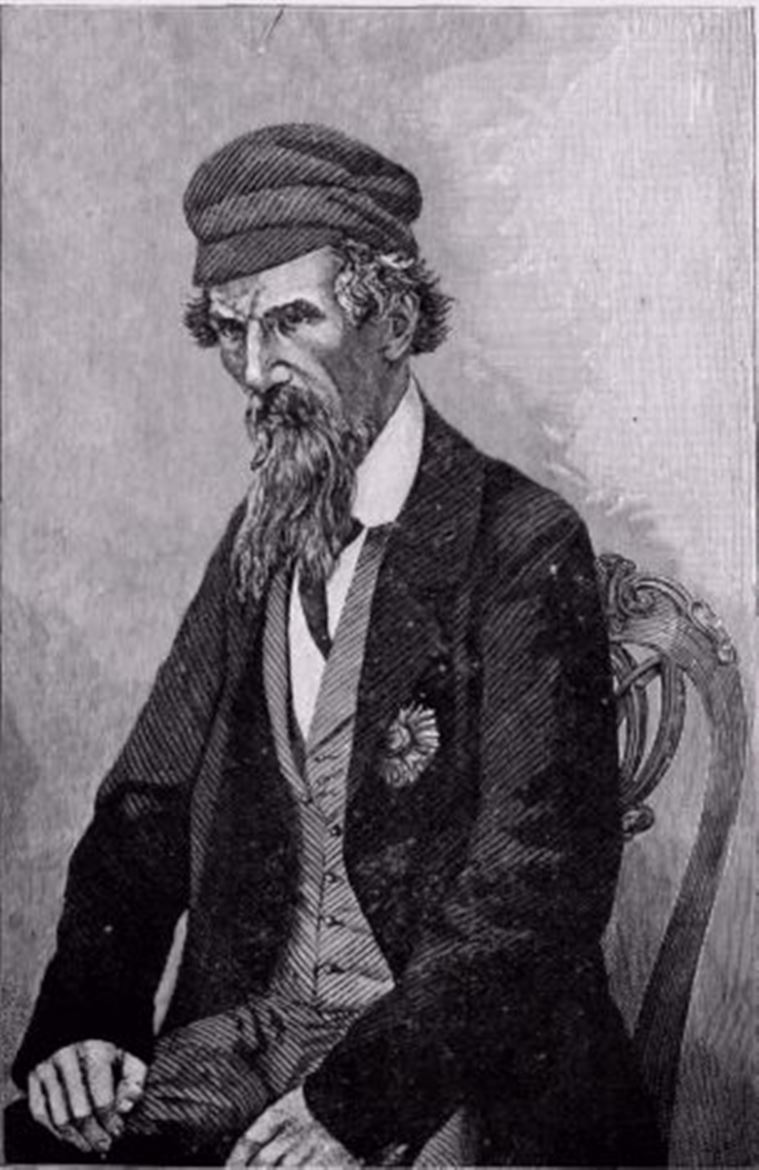
Sensing an easy victory, Lawrence, without sending a reconnoitring party to determine the strength of the rebels, led his force from Lucknow towards Chinhat to confront the enemy. His decision, however, turned out to be catastrophic. His column was not far from Chinhat when it was fired upon from Ismailganj village.
The initial action lasted for about an hour when the guns from the rebel side fell silent. Convinced of a victory, a Captain in Lawrence troop shouted in encouragement: “That is it: there they go! Keep it up!” but only to discover that the rebels, led-by sepoy mutineer Barkat Ahmad were just “limbering up their guns for a general advance”.
Opinion | India’s first war of Independence, and the legacy of Hindu-Muslim unity
“The mutineers had occupied Ismailganj and were pouring a deadly fire into the exposed Europeans from two directions. As a last resort the men of the 32nd were ordered to take Ismailganj and, with a loud cheer, they bounded forward to be met by a hail of musket-balls. The recently married Colonel Case was the first to fall, followed by scores of his men,” Professor Julian Saul David, a British academic military historian writes in his book The Indian Mutiny: 1857.
With several of his men killed or wounded and the guns “almost out of ammunition”, Sir Henry Lawrence ordered to retreat. Several collapsed from either heat-stroke, exhaustion and were killed by the pursuing rebels.
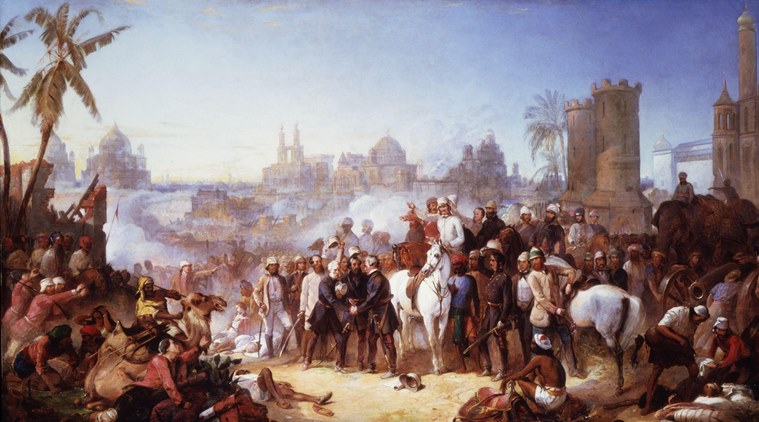
“One private of the 32nd, wounded in the leg, told his comrades to leave him while he blazed away at the mutineers. ‘I shan’t last long,’ he declared, ‘and I would never be able to reach Lucknow.’ Another man, ‘maddened by the heat and fatigue, charged single-handed into the ranks of the enemy and was soon put to rest’,” David mentions.
Sir Lawrence, along with the other company officers, then retreated and took shelter at the British Residency at Lucknow. However, on July, 2, Lawrence was mortally wounded by a shell splinter fired from the 8-inch howitzer that rebels had captured at Chinhat. He died two days later.
For the coming five months, the British residency saw a siege. It ended only in November after a relief mission led-by the new commander-in-chief in India Sir Colin Campbell, only the second of its kind, was able to take back control of the city and evacuate the defendants and civilians from the residency.
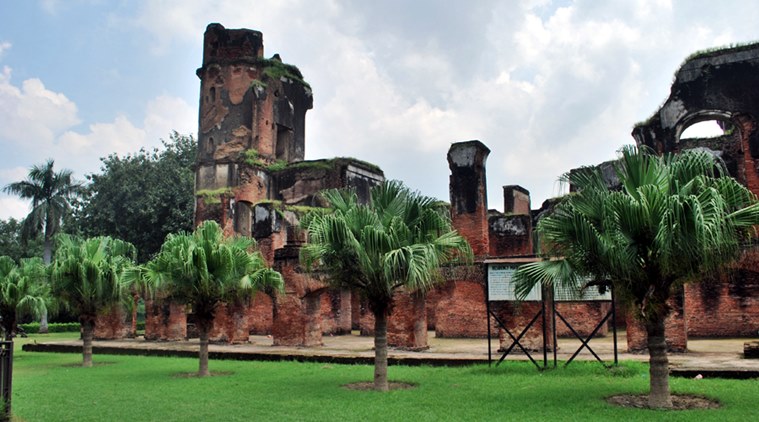
“For many Britons, the British defence of the besieged Residency in Lucknow, Awadh’s capital, remains a prime and enduring symbol of their heroic pluck against almost overwhelming assaults by Indians,” Historian Michael H. Fisher notes.
The siege of Aarah
Soon after the events in Meerut, Delhi and Lucknow, the European residents of Aarah in Bihar too realised, like in any other parts of the country, that they were standing on shaky ground.
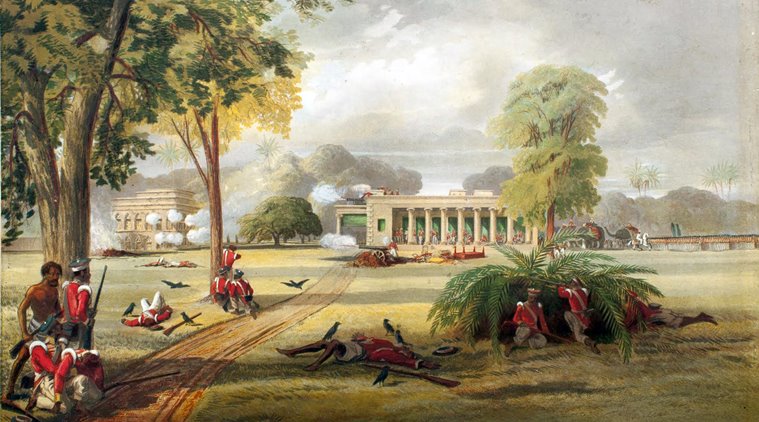
On June 8, a letter stating that an outbreak was expected in Dinapore, near Patna, was received by William Tayler, the Commissioner of Patna. As a consequence, women and children of the officers were sent away to safety.
“The departure and safe embarkation of the ladies and children removed a great weight from the minds of the few men who remained at Arrah,” James Halls, an Assistant Surgeon at the Civil Station of Arrah writes in his memoirs titled Two months in Arrah.
On July 17, an anonymous communication is received at the city Judge’s office saying a mutiny will take place and Kunwar Singh, an 80-year-old, local zamindar would be involved. “And singularly, all the information contained in it afterwards proved to be correct,” Halls writes.

In the coming days, the remaining European residents along with 50 Sikh members of the Bengal Military Police Battalion fortified themselves at the two-storey residence of Richard Vicars Boy, a District Engineer with East Indian Railway Company.
On the morning of July 27, as expected, the rebel sepoys, joined by Kunwar Singh and his forces, arrive in Arrah. They released the prisoners from the city, loot the treasury and head towards the fortified. But as they reach near it, the men inside opened fire, killing 18 instantly and forcing the others to take shelter behind the trees.
For the next eight days, the besieged party was subject to constant fire from the rebel forces that had now taken over the city. When they ran out of the water, Hall writes: “The Sikhs stealthily stole out at night and brought in the mining tools, conceived the idea of digging a well inside the house. This well, eighteen feet deep, was completed in twelve hours; plenty of water was obtained”.
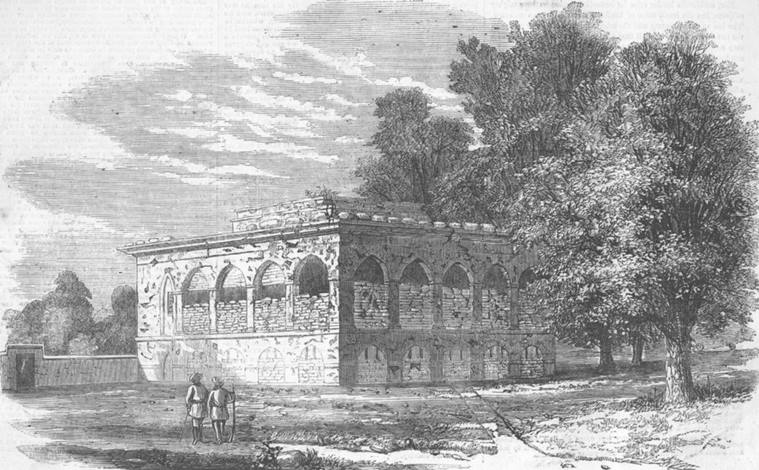
Two rescue attempts were made to save the residents of the house and take back control of the city. First, a party from Dinapore was sent, which collided with the resistance outside the city, suffered heavy losses and retreated.
However, it was the second party led-by one Major Vincent Eyre, stationed in Buxar, who defeated the rebel sepoys and forced Kunwar Singh along with his men to retreat and leave Aarah.
On August 3, a party of Major Eyre’s expedition visited the fortified house and the siege was officially broken.”That morning was a cheerful one for us all, and it was very gratifying to hear the comments of the officers and to exchange hearty shakes of the hand, some of them declared that our defence was the finest thing they had ever heard of,” a jubilant-sounding Halls writes in his memoir.
Kunwar Singh went on to fight against the East India Company for another year. He died in April 1858.
The Battle of Bareilly
The city of Bareilly was one of the strongholds during the rebellion of 1857 and remained so for nearly a year. Here, the resistance was led-by an 82-year-old Khan Bahadur Khan.

Once a pensioner of the British, Khan had rebelled against the British forces in 1857 and was appointed as the viceroy of the Mughal Emperor in the Rohilkhand region. Along with his deputy, Khushi Ram, Khan was a persistent cause of trouble and had defeated the British Army in several battles. However, with a limited political perspective, lack of arms and no quick system of communication, the rebels were now fighting against heavy odds.
“Khan Bahadur Khan was hopeful till very late that Bareilly would not fall to the Company as long as Lucknow remained free. His confidence derived perhaps from the large concourse of rebel forces,” Professor Iqbal Husain writes in his research paper titled Bareilly in 1857.
As neighbouring areas around the city continued to fall, Khan had no other option but to put a straight fight with Sir Colin Campbell, who was the then Commander of Chief of the British Army and marching towards Bareilly. On the morning of May 5, Campbell’s forces meet Khan’s garrison, which was estimated to exceed a count of 35,000 men, and in full confidence had come out of the city.
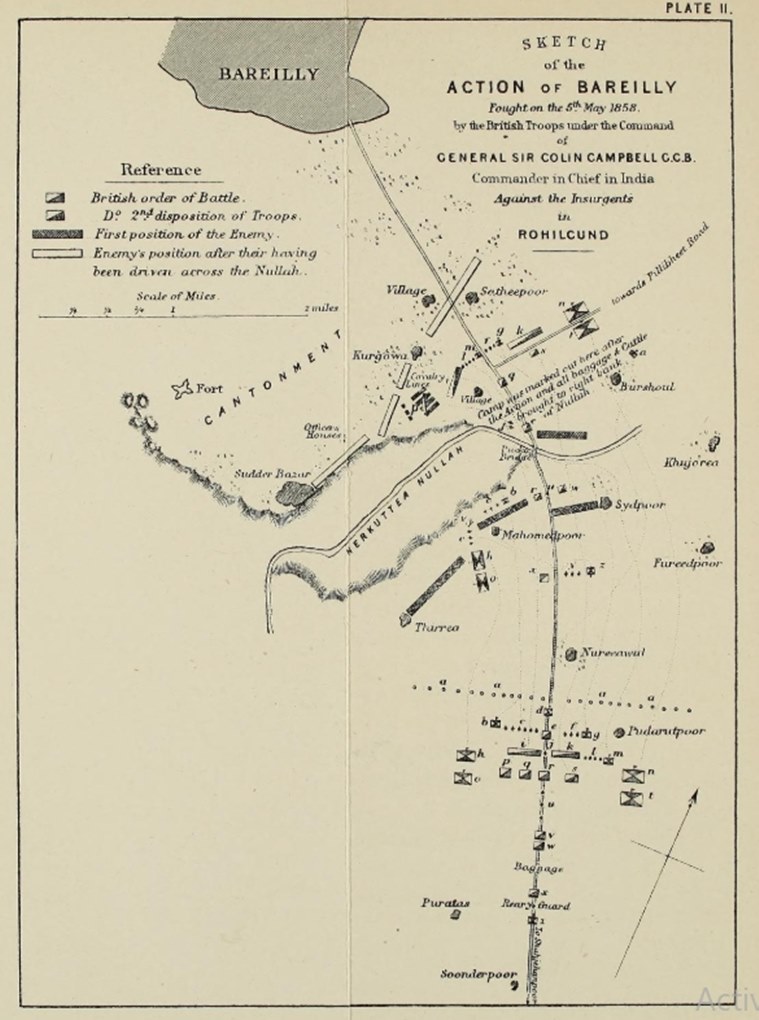
“And at 7 am on 5 May he marched his men towards the rebels in two lines: the 4th Punjab Infantry, the Highlanders and a Baluch battalion up front, with a heavy field battery in the centre, the flanks covered by horse artillery and cavalry. As they approached the Nukutte Bridge the enemy opened fire,” Campbell’s autobiographer Adrian Greenwood wrote in his biography.
William Russell, who was a war correspondent of The Times, London and was travelling with the British Army called the clash of the two armies as ‘a veritable stampedo of men and animals’. He wrote: “There was a confused clamour of shrieks and shouting in my ear. My dooly was raised from the ground and then left fall violently. I heard by shoulding “Sowar! Sowar!” I saw them flying with terror in their faces. Elephants were trumpeting shrilly as they thundered over the fields, camels slung along at their utmost joggling stride, horses and tats [ponies], women and children were all pouring in a stream which converged and tossed in heaps of white and black as it neared the road – an awful panic!”
In an action that lasted for nearly six hours and nearly cost the renowned war correspondent his life, the British forces were successful in making Khan’s force retreat and take over the city. Historians note that the fall of Bareilly was a satisfactory conclusion to Campbell’s Rohilkhand campaign and assert the fact that it was the last major blow to the rebels from which they never recovered.
After retreating from Rohilkhand, Khan Bahadur Khan went to Nepal, where he was captured and sent back to India where following a trial, he was sentenced to death on February 24, 1860.
***
Other notable events: Battle of Chinhat, Battle of Kintoor, Battle of Kota-ki-Serai and Battle of Agra.
Suggested readings: The India Mutiny, 1857 by David Saul; The Last Mughal: The Fall of a Dynasty, 1857 by William Dalrymple; A tale of two revolts India 1857 and the American Civil war by Rajmohan Gandhi; Mutiny at the Margins: New perspective on the Indian uprising 1857, edited by Andrea Major and Crispin Bates.